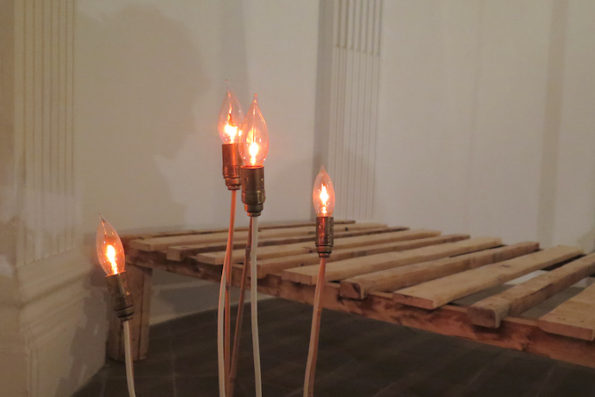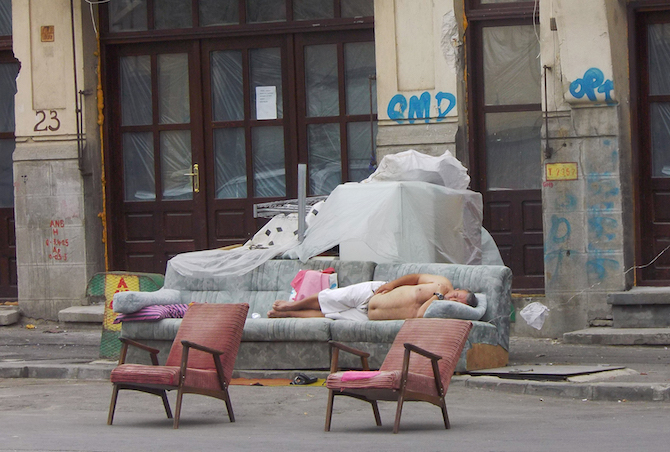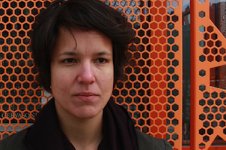Search
To search for an exact match, type the word or phrase you want in quotation marks.
A*DESK has been offering since 2002 contents about criticism and contemporary art. A*DESK has become consolidated thanks to all those who have believed in the project, all those who have followed us, debating, participating and collaborating. Many people have collaborated with A*DESK, and continue to do so. Their efforts, knowledge and belief in the project are what make it grow internationally. At A*DESK we have also generated work for over one hundred professionals in culture, from small collaborations with reviews and classes, to more prolonged and intense collaborations.
At A*DESK we believe in the need for free and universal access to culture and knowledge. We want to carry on being independent, remaining open to more ideas and opinions. If you believe in A*DESK, we need your backing to be able to continue. You can now participate in the project by supporting it. You can choose how much you want to contribute to the project.
You can decide how much you want to bring to the project.

An inventory to record the move to Valls. Almost everything that configures Hogar dulce hogar (Home Sweet Home) by Ciprian Homorodean would fit in a catalogue; but although I will itemise the pieces that make up this new chapter in the work of the Rumanian artist, I notice right from the beginning some elusive tensions hidden in the Sant Roc Chapel. In the hallway, a board. In the space that delineates the living room, a bench in front of a side table. Next a threshold, that asks to be crossed, accessing the bedroom. Lamps generate different atmospheres in all of the rooms. Scenarios bathed in tenuous light in which the furniture seems decorative in appearance, until it insinuates the rupture of the tandem between functionality and the precarious. This setting of the stage of minimal resources is a declaration of intentions: the modelling of an aesthetic not restricted to mere ornament so much as on the contrary it seeks forms of living and creating with scarcity.
The reusing of recycled materials alludes to the essentials needed for rest or for the pleasure of eating but at the same time also manifest the importance the (de)construction of the found has for this artist. The pieces are the result, the final gesture, but are not the only ones to bear in mind. In this working process of the accumulation of experiences, one has to take into consideration the time from when Ciprian Homorodean first sets out on the trail, like a bloodhound, looking for materials to produce the minimally necessary in the rooms. To assemble the house, to think of the materials with which to model the chairs, the dining-room, the shelves… is also a way of distancing oneself from mere utility. According to the form and the place in which these are developed, they express the economic conditions and (dis)entrenchment of the occupants of a house.
A (desacralized) religious building, the chapel of Sant Roc is the place that houses the exhibition and becomes the backdrop for the questioning of the habitat. What is a home? Where is it situated? Is furniture fundamental for the habitation of a home? Are houses cupolas? Are there houses without roofs? With no roof but with a fire to huddle around? Let me add a question formulated by Marta Rosler in 1993; its validity dialogues and pays testimony to the relevance of what has been recounted until now: How do we know what home looks like?

Hogar dulce hogar is a framework that questions and proposes how to inhabit the spaces we imagine, those given to us or those we are capable of constructing. It is also an echo: the constant repetition of dogs barking. The pack is on the prowl, watching perhaps over the belongings of their owners. Suddenly you hear a noise: Dogville is now in Valls. From here the howls propagate, escaping the religious salon converted into an exhibition space while simultaneously mingling with those of the dogs in the neighbourhood. In DogValls, the tensions I’ve referred from the start also focus on these sites of worship that could serve as places of shelter for refugees. Paradoxically some conform to being the scenarios for the provision of cultural tourism, exhibition spaces or as voting centres for presidential elections, as happened at the chapel of San Roc the day after the opening of Hogar dulce hogar. In short it would seem they are hiatuses that introduce microcosms of other forms of social experience: different layers of society sharing for instants the same roof.
Some of the pieces that Ciprian Homorodean concocted for personal use in his home in Barcelona are the ones he is showing in this exhibition that forms part of the Dèria cycle. Stripping the flat that provides him shelter to compose a new piece. The move generated a void in his family space. The removal of his personal furniture re-signifies and resituates it, placing in evidencing that this artist bears his house on his back. He can (un)pack wherever he has a place to deploy a site specific, like the one that fills the chapel of Sant Roc in Valls. Little by little he changes the domestic landscape as if it was a transposition in which the formal diversity makes material the argument of fragility or the mobility of the home. Hogar dulce hogar converts the exhibition hall into an authentic world; one incidentally, at the antipodes de of the homogeneity imposed by Ikea.
And to bring to an end this text, that aims not to be solely wallpaper for Ciprian Homorodean’s décor; a brief epilogue. The constant in Dèria is that the home is where the artist’s work is shown. The obsession driving him demonstrates the means with which to understand his creative process; the way the organisation of his artistic labours becomes a continuous action and critique. The home is where he places one of his pieces it is a bridge between thought, creation and managing life.

An incurable onlooker, Aymara Arreaza R. uses walking around, reading, the criticism of displacement and questioning as her working tools. She is a hybrid of trades: expressing herself through writing, some of her own images, teaching as well as research projects that she backs up with the construction of more personal geographies. Since 2011 she directs www.rutadeautor.com
"A desk is a dangerous place from which to watch the world" (John Le Carré)